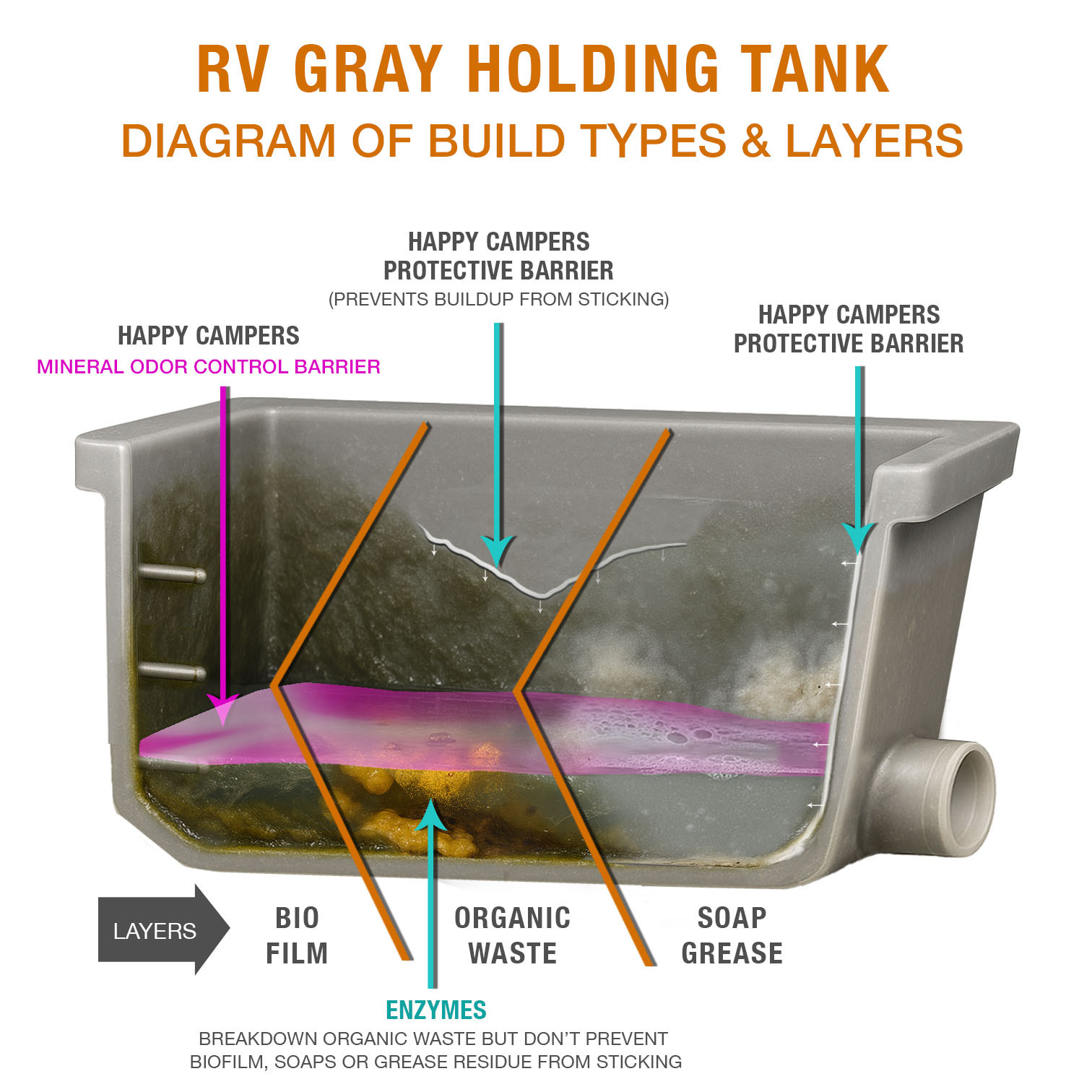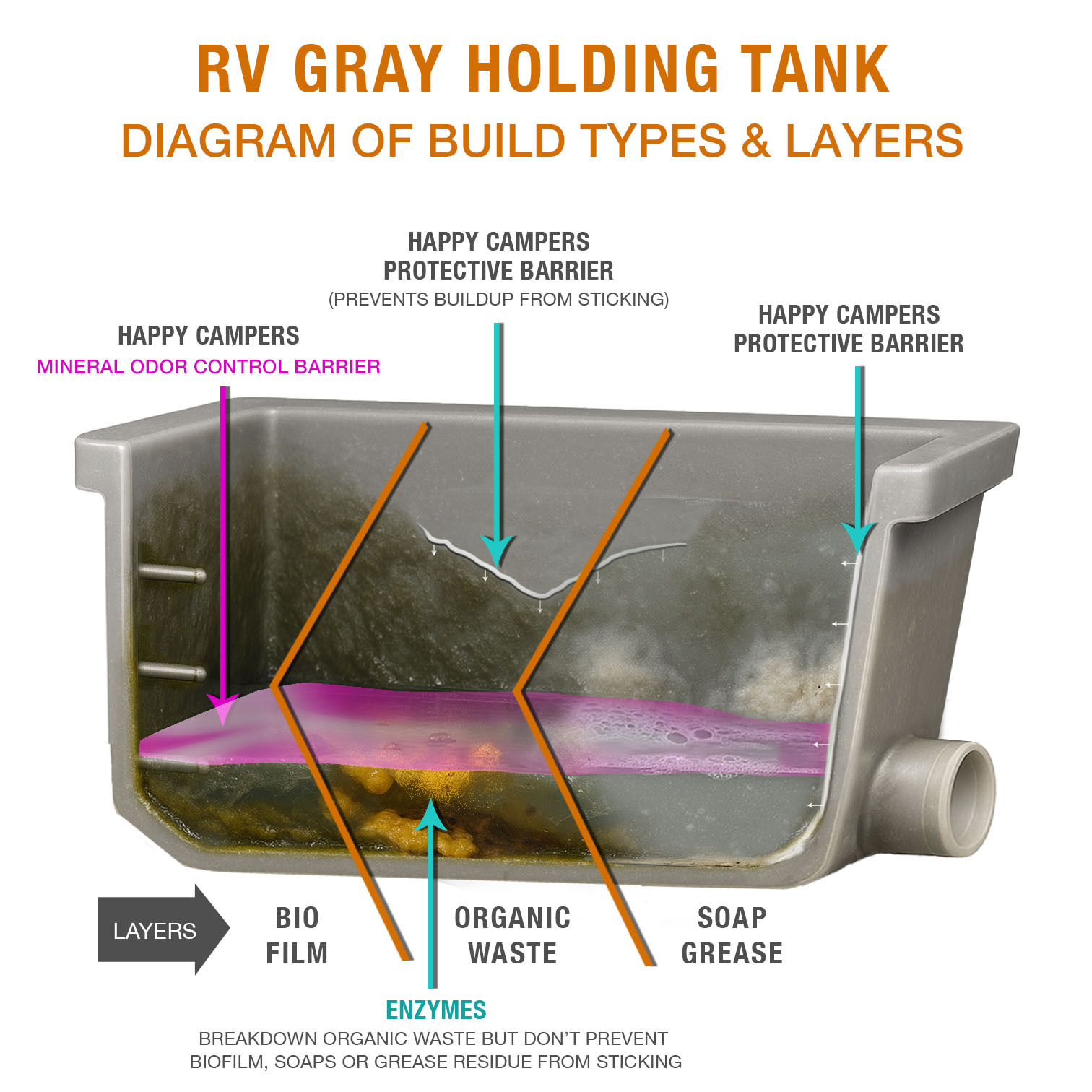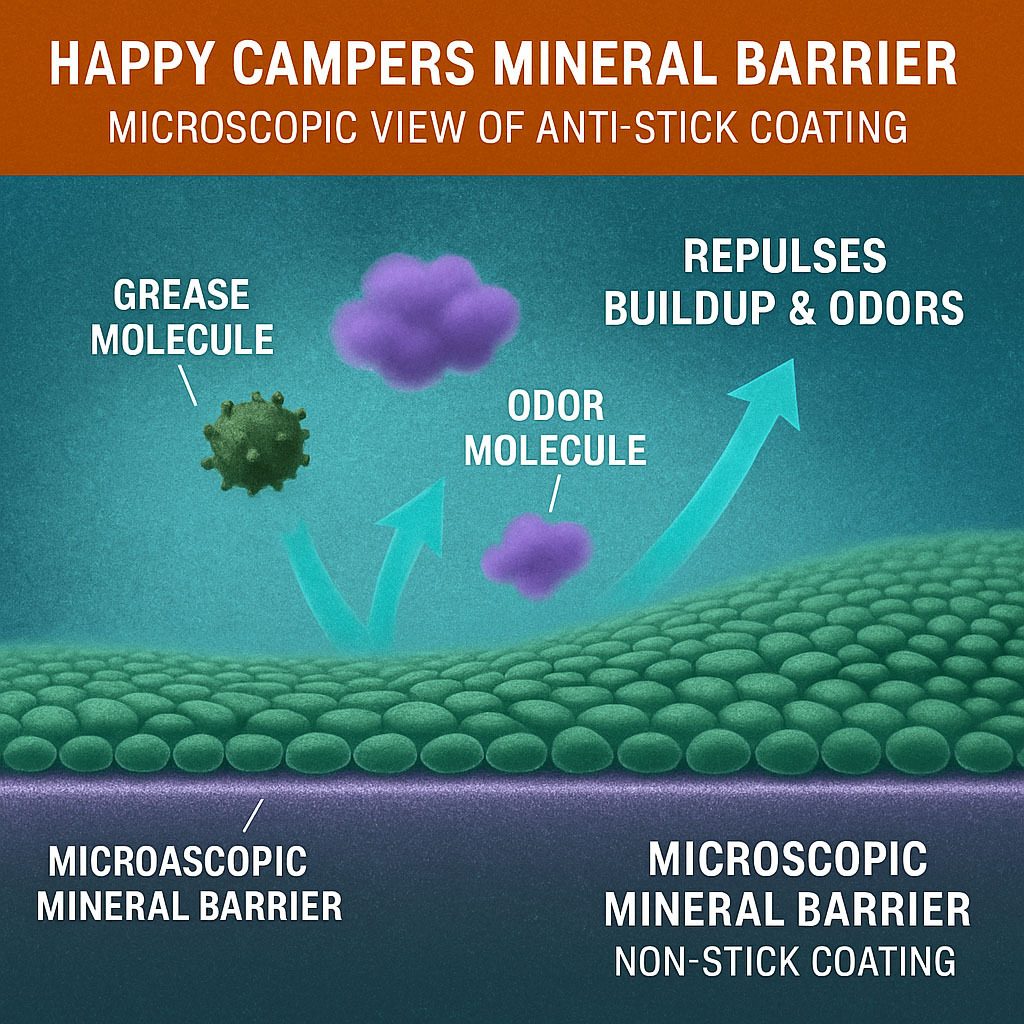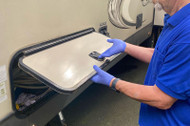How to Clean Your RV Gray Water Tank to Prevent Odors and Clogs
Posted by Happy Campers Store on Oct 22nd 2025
How to Clean Your RV Gray Water Tank to Prevent Odors and Clogs (2025 Guide)
Learn the proven way to clean your RV gray tank, remove odors, and stop grease and soap film from sticking to your tank walls using mineral-based treatments.
Updated: 10-22-2025
Your RV’s gray water tank might seem harmless compared to the black tank, but when it starts smelling like rotten eggs or sewer gas, the problem runs deeper. The gray tank collects water from sinks and showers, where grease, soap, and food residue combine into a sticky buildup that clings to the tank walls and plumbing. This guide shows how to clean your RV gray tank correctly and how to get rid of gray tank odor for good.
Quick Answer: To clean your RV gray tank and eliminate odors, drain it completely, flush with clean water, add a mineral-based cleaner like Happy Campers Extreme Cleaner, let it soak overnight, and rinse thoroughly. This dissolves grease, soap scum, and odor-causing film safely.
Why Your RV Gray Tank Smells (And How to Fix It)
Gray tank odors come from sulfur gases released by bacteria that feed on trapped residue in a low-oxygen environment. Even if you drain your tank, the film layer on the walls keeps releasing odors. Rinsing removes water, not buildup.
According to the PUBMed's overview on biofilms, this sticky film acts like glue, protecting odor-causing bacteria. Professional plumbers (PHCC) deal with similar drain buildup — the same process happens in your gray tank.

What Causes Odor and Film in Gray Tanks
- Grease and fats from dishwashing coat tank walls and float to the surface.
- Soap scum forms a sticky, mineralized film that clings to surfaces.
- Biofilm develops when bacteria attach to the film, releasing odor gases.
- Mineral scale from hard water creates rough surfaces that trap residue.
? Science Fact: Enzymes ≠ Effective Gray Tank Cleaners
Enzyme and bacterial treatments only break down organic waste — not the grease, soap, or detergent films that actually cause gray tank odors. These are non-organic residues that enzymes can’t dissolve. A mineral-based cleaner removes the film and restores flow.
Learn the science behind why enzyme treatments fail in gray tanks.How to Clean an RV Gray Water Tank Step-by-Step
- Drain the tank completely. Always empty the black tank first, then the gray tank.
- Flush with clean water. Use a rinser or back-flush hose until discharge runs clear.
- Add a mineral-based cleaner. Happy Campers Extreme Cleaner breaks down soap film, grease, and biofilm.
- Let it soak. Leave the solution for several hours or overnight while driving.
- Rinse again. Flush thoroughly to remove loosened residue and odors.
How to Get Rid of RV Gray Tank Odor (For Good)
Gray tank odors don’t escape through the roof vent — they come back through sink and shower drains. When P-traps dry out or film builds inside drain lines, gases travel back into the RV. The solution is to remove the greasy film and keep traps sealed.

The best way to get rid of gray tank odor permanently is to perform a deep clean followed by a Deep Clean Tank Reset with Happy Campers Extreme Cleaner. The treatment dissolves grease, kills odor sources, and creates a slick mineral barrier that prevents future buildup.
How Happy Campers Prevents Odors Before They Start
Happy Campers uses natural mineral ions that dissolve buildup and create a no-stick barrier on tank walls. This barrier keeps new grease and soap films from attaching and stops gases from escaping up the drains. Think of it as a clean, odor-proof shield inside your tank.

The Science Behind Happy Campers' No-Stick Mineral Barrier
What makes Happy Campers different from enzyme or bacterial treatments is its mineral-ion chemistry. When mixed with water inside your gray or black tank, the formula releases active mineral ions that:
- Neutralize odor-causing compounds such as hydrogen sulfide and ammonia before they gas off.
- Break the molecular bonds that hold grease, detergent film, and biofilm layers to plastic and ABS tank walls.
- Create a microscopic mineral coating on tank surfaces that smooths and seals pores in the plastic — preventing new residue from sticking or polymerizing.
- Balance pH and ionic charge to discourage bacterial adhesion and growth inside plumbing lines.
This mineral film is invisible and non-slippery but acts as a protective buffer — stopping residue before it can form layers. Unlike enzymes, which only digest organic waste temporarily, Happy Campers changes the tank’s surface chemistry to keep it clean for weeks after each use.
The Invisible Mineral Barrier: How It Actually Works
Unlike enzyme or petroleum-based treatments that leave residue or rely on digestion, Happy Campers creates a microscopic mineral reaction inside your gray and black tanks. When mixed with water, the mineral ions interact with the tank’s interior surfaces to form an invisible, no-stick barrier that prevents residue from clinging and bacteria from anchoring.

- Not visible to the eye: The layer forms on a molecular level—there’s no waxy coating, film, or residue left behind.
- Doesn’t affect sensors: The mineral surface helps keep probes clean and free of scum, improving sensor accuracy.
- Prevents adhesion: Soap film, grease, and biofilm can’t grip smooth, ion-balanced surfaces, so odors and residues rinse away easily.
- Neutralizes odor gases: Minerals bind to hydrogen sulfide and ammonia, stopping sulfur and “sewer” smells at the source.
Science Fact: It’s Invisible and Sensor-Safe
The Happy Campers mineral layer is invisible to the naked eye and doesn’t coat your tank like wax or oil. It smooths the tank surface on a microscopic level, making it harder for grease or soap scum to stick—while leaving level sensors completely unobstructed. That’s why many RVers notice more accurate sensor readings after cleaning with Happy Campers Extreme Cleaner.
How to Prevent Future Odors and Film Buildup
- Rinse your gray tank every 2–3 dumps.
- Use minimal dish soap — excess detergents feed residue buildup.
- Add Happy Campers Holding Tank Treatment after every tank dump for odor control and surface protection.
- Rinse, flush, and add Happy Campers with 3–5 gallons of water before storing your RV.
- Perform a full RV Tank Reset once yearly or as needed.
Explore More RV Tank Care Resources
Keep every tank in your RV clean, odor-free, and working like new with these expert guides from Happy Campers:
- RV Deep Clean Holding Tank Reset: How to Deep Clean Every Tank the Right Way — step-by-step guide for restoring tank performance and removing stubborn buildup.
- How to Prevent RV Toilet Stains and Odors — simple cleaning habits that protect seals and keep your RV bathroom fresh.
- Why Your RV Smells Like Sewage (And How to Fix It) — how to track down and eliminate sewer-like smells from gray and black tanks.
- Best RV Holding Tank Treatments Compared (2025 Guide & Reviews) — see which treatments actually control odor and protect your tanks long-term.


